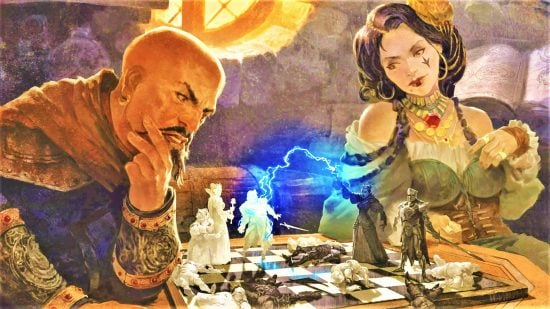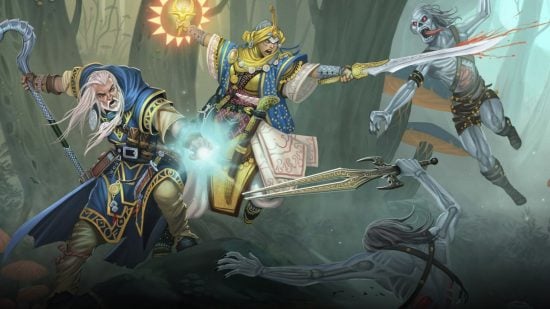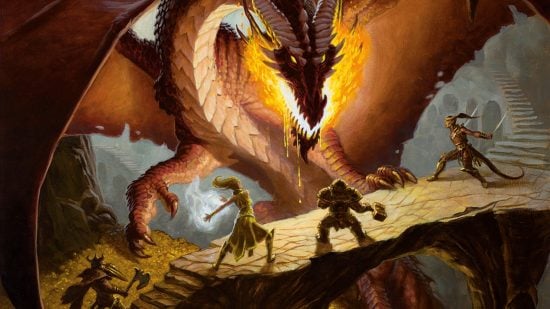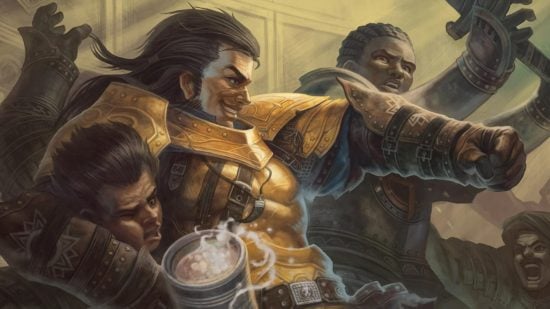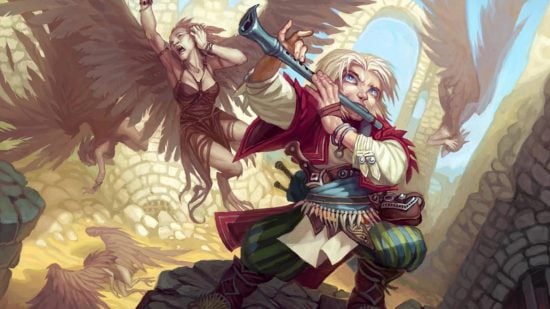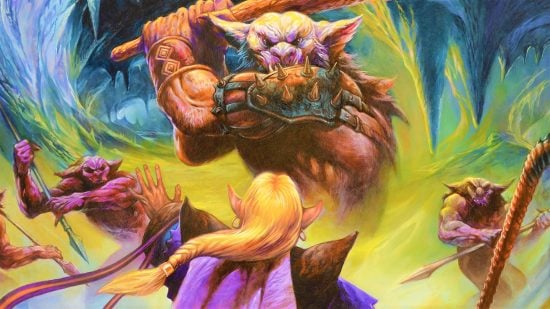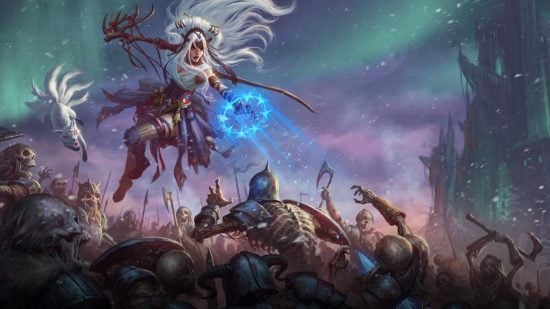Pathfinder 2e and Dungeons and Dragons 5e are two tabletop RPGs with a lot in common. Both are a great way to spend an evening (or several hundred) if you’re a fan of character builds, dungeon crawling, and d20s. They’re similar enough that the fresh-faced and money-conscious RPG-er may feel they need to choose between them. And making that choice brings up one key question: ‘What’s the difference between Pathfinder and DnD, anyway?’
When it comes to Pathfinder vs DnD, there are many differing details, but the overall difference can be summed up pretty easily. The short is: Pathfinder is more complex, but it’s also more customisable. It’s a solid choice for players who love crunchy rules that cover any and all scenarios, as well as offer one-hundred-and-one interesting character options. D&D, meanwhile is more approachable for newbies who prefer a looser, faster-paced roleplaying experience.
If you’re trying to find out which tabletop RPG is better, that’s a little trickier, as there’s no true right answer. We at Wargamer love both games. We’ve dedicated a lot of brain space to DnD races and Pathfinder races alike – same with DnD classes and Pathfinder classes. So while we can point you in the right direction, it’s ultimately up to you to decide who wins the great Pathfinder vs DnD debate.
For now, read on to see the core differences between Pathfinder 2e and DnD 5e:
Pathfinder is younger (and less well-known) than DnD
While D&D hit tabletops in 1974, Pathfinder started life in 2009. It was originally a spin-off of Dungeons and Dragons’ revised third edition (or D&D 3.5e), adopting many of its rules and features through the games’ dedicated Systems Reference Document. This is why the games appear so similar at first; Pathfinder is an apple that’s only fallen so far from the tree.
Because DnD is older and is considered the original tabletop RPG, it’s more well-known than Pathfinder. After all, we’re yet to see a Netflix show like Stranger Things paying homage to Paizo’s system (though never say never). This doesn’t make Dungeons and Dragons the better game, but it does mean new players might have an easier time finding a campaign to join.
Both games do run organised play in the forms of Wizards of the Coast’s Adventurers League and Paizo’s Pathfinder Society. These are great tools for seeking out an in-person session of either game. Or, if you prefer to play digitally, both games are supported by virtual tabletops like Roll20.
Pathfinder is more complex than DnD
While Pathfinder shares many of the same concepts as DnD, most of them have more fleshed-out rules. This means the rules can account for a wider variety of roleplaying scenarios, but there’s much more to learn up-front.
Here are just a few of the ways Pathfinder adds complexity:
Turn actions
In DnD, a player can move, and they can also perform one action, one bonus action, and one reaction. Different character features can tweak this, but the core turn structure remains the same.
In Pathfinder, a player gets three actions, one reaction, and a limited number of free actions. These core actions cover everything; there’s no distinction between movement and attacks. It’s a more flexible system, so you may need to think more carefully about your moves.
Proficiency
In Dungeons and Dragons, you’re either proficient in a skill or you aren’t. Mechanically, this means you get to add your proficiency bonus (a number that occasionally increases with a DnD level up, but won’t change too much) to relevant rolls.
In Pathfinder, you can be proficient in something by degrees. There are five different ranks of proficiency: untrained, trained, expert, master, and legendary. Each has its own distinct proficiency bonus. And rather than this number going up as you level up, your proficiency rank will increase instead.
Advantage and crits
In D&D, the concept of ‘advantage and disadvantage’ is used to account for situations where a character may find a skill check harder or easier than usual. Having advantage in 5e means you get to roll your d20 twice and take the better result, and you take the worse result if you have disadvantage. Meanwhile, rolling a one or a 20 on an attack roll triggers a critical failure or a critical success.
In Pathfinder, things are (you guessed it) a little more complex, but also a little more flexible. If a character is deemed to have an advantage or disadvantage, they add a bonus or penalty to their roll. This can be a +1 or a -1, but it can be as much as +4 or -4 depending on the situation. And for crits, any roll that beats or fails the Difficulty Class of the roll by ten or more is considered a critical success or failure.
Pathfinder offers more customisable character options than DnD
The character customisation options in Pathfinder feel huge by comparison with D&D. This isn’t just down to races and classes, either. Pathfinder has 16 classes to D&D’s 12, but it has far fewer ancestries (its version of races), coming in at 36 to D&D’s 60-odd. The real game-changer in Pathfinder is feats. 5e feats are an optional rule, but 2e feats are the main event when it comes to character progression.
Everybody gets feats in Pathfinder, at every level. There are feats specific to classes, ancestries, backgrounds, and skills, as well as general feats any character could take.
This can make the possibilities for a character build feel literally endless – something that will delight lovers of creative and optimal character builds, but might end up overwhelming new players who aren’t sure where to start. D&D offers more railroaded character progression, with minimal decision-making after the initial character creation process, but it’s also a lot more approachable.
